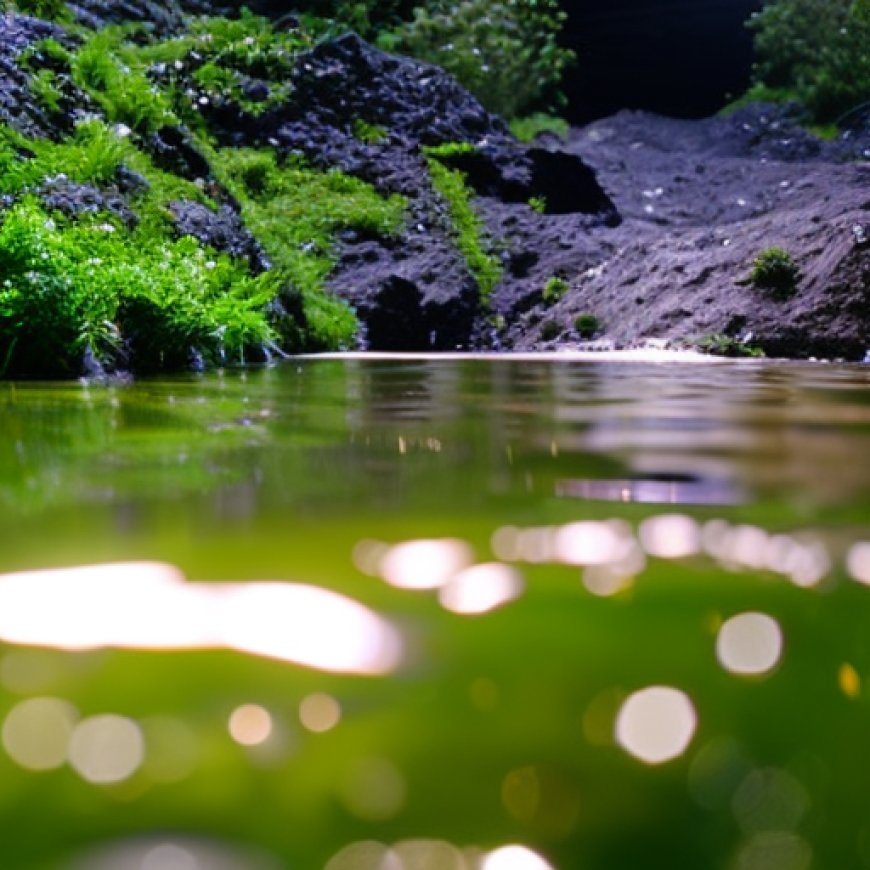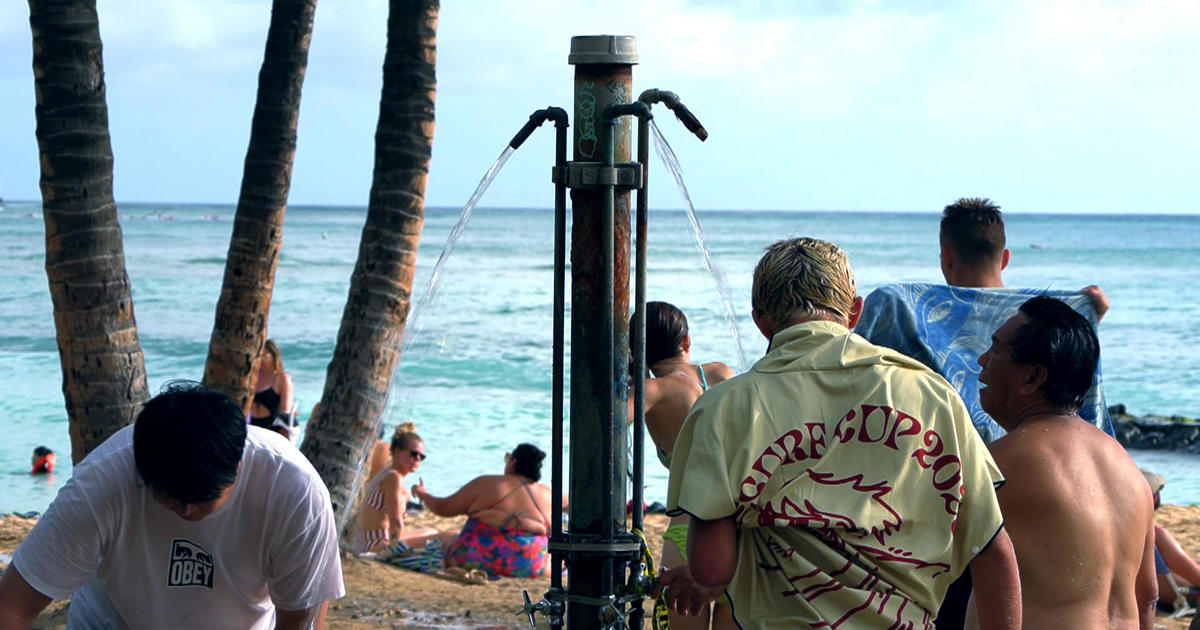The potential threat to Honolulu’s water supply lurking underground
The potential threat to Honolulu's water supply lurking underground CBS News


Guarding Against Contamination: Honolulu’s Water Supply at Risk

Two years after a fuel leak at a Navy storage complex contaminated drinking water at Pearl Harbor, the city of Honolulu is taking measures to protect its own water supply.
The Red Hill Fuel Storage Facility
For decades, the underground facility known as Red Hill stored millions of gallons of fuel for the U.S. military at Pearl Harbor. Built hastily before the United States’ involvement in World War II, Red Hill has experienced at least 73 fuel leaks since 1943, according to the Sierra Club. These leaks have resulted in an estimated 180,000 gallons of leaked fuel over the years, although the Navy disputes this number.
Ongoing Contamination Concerns
In November 2021, a cracked pipe at Red Hill caused thousands of gallons of jet fuel to leak into the drinking water on the base at Pearl Harbor. Another leak in 2014 released up to 27,000 gallons of fuel. The massive tanks at Red Hill, capable of storing 250 million gallons of jet fuel and marine diesel, were built into Hawaii’s porous volcanic rock. There is uncertainty about whether any fuel may still be trapped within the rock, posing a potential problem for both Pearl Harbor and neighboring Honolulu, whose primary water supply is located 100 feet below the Navy complex.
The Need for Protection
Ernie Lau, the chief engineer of the Honolulu Board of Water Supply, emphasized the importance of protecting freshwater resources on the island. With no federal drinking water standard for jet fuel, Lau highlighted the need for proactive measures. While there is currently no evidence of leaked jet fuel in Honolulu’s water supply, the Board of Water Supply has closed the well closest to Red Hill as a precautionary measure. The city is now requesting $1.2 billion from the federal government to replace the well.
Precious Water Resources
Water is considered precious on the islands of Hawaii, known as “wai” in native Hawaiian. The word for wealth is “wai-wai,” emphasizing the significance of water. In light of the incidents at Red Hill, Lau urged the U.S. Navy to safeguard Honolulu’s most important natural resource. He called for active efforts to locate and clean up any fuel contamination to ensure long-term protection.
A Lasting Legacy
Lau acknowledged that the situation at Red Hill will have long-lasting consequences. The fuel trapped deep underground in the porous lava rock will persist for generations. It is crucial to address this issue to prevent further harm to the environment and water supply.
SDGs, Targets, and Indicators
1. Which SDGs are addressed or connected to the issues highlighted in the article?
- SDG 6: Clean Water and Sanitation
- SDG 14: Life Below Water
The article discusses the contamination of drinking water at Pearl Harbor due to fuel leaks from the Red Hill storage complex. This issue is directly connected to SDG 6, which aims to ensure availability and sustainable management of water and sanitation for all. Additionally, the potential contamination of Honolulu’s water supply highlights the importance of protecting life below water, which is the focus of SDG 14.
2. What specific targets under those SDGs can be identified based on the article’s content?
- SDG 6.1: By 2030, achieve universal and equitable access to safe and affordable drinking water for all.
- SDG 14.1: By 2025, prevent and significantly reduce marine pollution of all kinds, particularly from land-based activities, including marine debris and nutrient pollution.
The article emphasizes the need to protect drinking water from contamination, indicating the relevance of SDG 6.1. The target under this goal is to ensure universal access to safe and affordable drinking water. Additionally, the potential pollution of marine ecosystems due to fuel leaks highlights the importance of SDG 14.1, which aims to prevent and reduce marine pollution.
3. Are there any indicators mentioned or implied in the article that can be used to measure progress towards the identified targets?
- Number of fuel leaks and gallons of leaked fuel from the Red Hill storage complex
- Presence of jet fuel in Honolulu’s water supply
- Implementation of measures to clean up and remove fuel from the environment
The article mentions that there have been at least 73 fuel leaks since 1943, resulting in the leakage of approximately 180,000 gallons of fuel. These numbers can serve as indicators to measure progress towards the targets of SDG 6.1 and SDG 14.1. Additionally, the presence or absence of jet fuel in Honolulu’s water supply can be monitored as an indicator of progress. The implementation of measures to clean up and remove fuel from the environment can also be used as an indicator.
Table: SDGs, Targets, and Indicators
| SDGs | Targets | Indicators |
|---|---|---|
| SDG 6: Clean Water and Sanitation | SDG 6.1: By 2030, achieve universal and equitable access to safe and affordable drinking water for all. | – Number of fuel leaks and gallons of leaked fuel from the Red Hill storage complex – Presence of jet fuel in Honolulu’s water supply – Implementation of measures to clean up and remove fuel from the environment |
| SDG 14: Life Below Water | SDG 14.1: By 2025, prevent and significantly reduce marine pollution of all kinds, particularly from land-based activities, including marine debris and nutrient pollution. | – Number of fuel leaks and gallons of leaked fuel from the Red Hill storage complex – Implementation of measures to clean up and remove fuel from the environment |
Copyright: Dive into this article, curated with care by SDG Investors Inc. Our advanced AI technology searches through vast amounts of data to spotlight how we are all moving forward with the Sustainable Development Goals. While we own the rights to this content, we invite you to share it to help spread knowledge and spark action on the SDGs.
Fuente: cbsnews.com

Join us, as fellow seekers of change, on a transformative journey at https://sdgtalks.ai/welcome, where you can become a member and actively contribute to shaping a brighter future.







